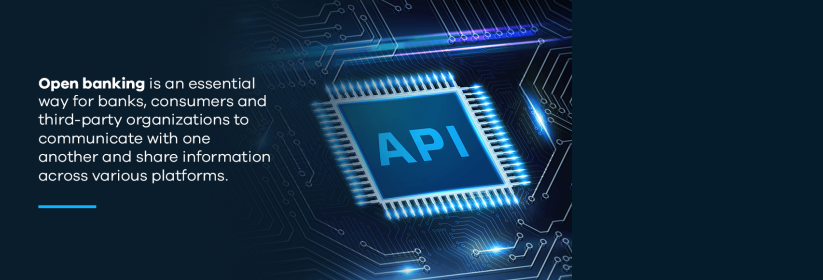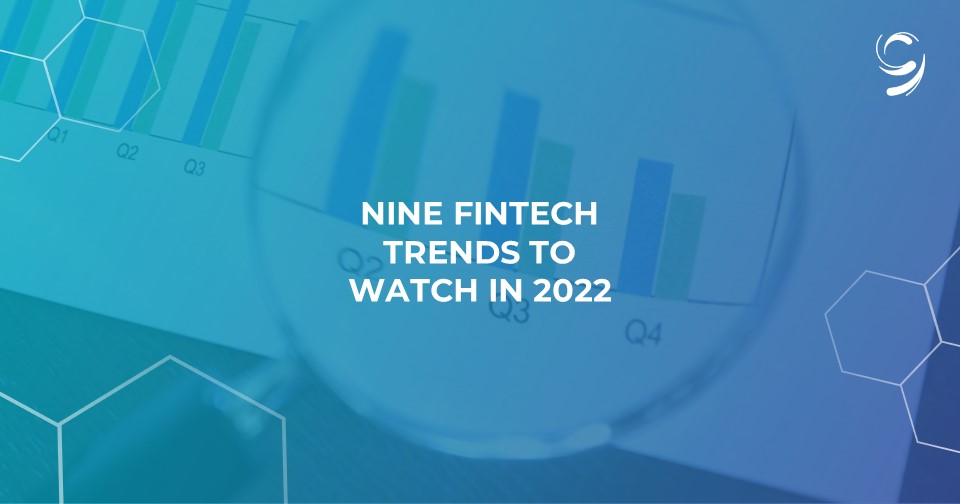There is no doubt that technology is becoming more and more prevalent in people’s everyday lives. From the way we communicate to the way we absorb information, technology finds new and progressive ways to make our lives easier. Even the way banks and other financial companies interact with customers is transitioning to a more technological mindset.
Financial technology, or fintech, is the general term used to describe the ways we streamline, elevate, digitize or interface with traditional financial services. Even now, most banks allow for mobile deposits, the transfer of money between accounts and even beginning the process of a loan application.
Fintech strives to bridge the gap between consumer and financial organization by creating a smoother and more user-friendly online interaction. As technology becomes more advanced and newer methods of interaction become available, fintech adapts and evolves to incorporate those trends.
How Has 2021 Influenced Fintech Technology Trends?
To keep you and your company relevant in this evolving financial and technological climate, it is essential that you find ways to adapt and incorporate fintech into your business practices.
The 2020 pandemic forced many businesses to rethink the way they can interact with their customers while keeping them, their employees and the customer safe. Although 2020 saw an increase in the ways we can use fintech, businesses rushed the implementation of these trends. The advancements worked for the immediateness of the situation, but they were simply stepping stones into the larger picture.
As 2021 continues, the current social climate and technology advancements have greatly influenced the way companies can use fintech technology. Advancements in financial technology are changing the way that consumers do business and how the customer experience is managed. More and more customers are embracing digital banking as the pandemic has made physical interactions less ideal and the benefits of digital banking become increasingly apparent.
To better prepare you and your company for the fintech trends that are prevalent in 2021 and will carry into 2022, let’s take a look at nine of the ways 2021 has influenced fintech technology:
1. Contactless payments
2. Artificial intelligence in fintech apps
3. Autonomous finance
4. Cryptocurrency and blockchain
5. Regulatory technology
6. Digital-only banks
7. Open banking
8. Data privacy
9. Emphasis on customer experience
1. Contactless Payments
Long before the pandemic forced many businesses to find ways to limit interactions between customer and employee, contactless payment was already on the rise. Many people and businesses have slowly transitioned away from using cash. Payments and financial management are all done online with digital currency, limiting the need to use physical cash.
Digital payments offer more flexibility and convenience for the customer. Customers can more easily manage their finances without the fear of losing loose change or bills. Customers will always know how much they spent, where they spent it and how much money they have left. As contactless payments becomes increasingly beneficial for customers, they expect major retailers, and even some small businesses, to accept digital currency.
Applications such as PayPal and Cash App allow customers and businesses to accept payments and issue refunds without needing to exchange physical items. Even credit cards and debit cards are implementing contactless payments through the use of the tap-to-pay feature, which utilizes short-range wireless technology to create a secure connection between card and device. Apple Pay, Google Pay and Samsung Pay make digital payments all the easier by safely storing card information on the chosen device and using it to securely deliver payment.
2. Artificial Intelligence in Fintech Apps
Artificial intelligence (AI), machine learning and robotic process automation help to identify, manage and analyze consumer data and financial usage. AI improves the way you can filter, sort and understand information about your consumer, individually or as a group. It also provides better customer support and increases customer relationships.
Have you ever been notified of a fraud alert on your credit card? AI recognizes how and where you spend and reacts when it notices the card being used outside what is normal. Using AI in this way shows your consumer that you care about protecting them.
You can effectively use AI as a customer service tool that reduces the time and cost. Customers do not like waiting on hold for long periods to have a simple question answered. Chatbots and virtual customer assistants direct customers to the information they need without having to waste a customer service representative’s time. Chatbots can interact with hundreds of consumers at a time and direct each one to what they need to know. Chatbots work well on websites for those who do not want to verbally communicate, and virtual processing assistants provide the verbal instructions some people need or prefer.

3. Autonomous Finance
Autonomous financing is another means of utilizing AI in the financial industry. Everyone loves the ability to be able to micromanage their finances on the go. You’re at a restaurant or buying groceries, and you realize that you don’t have enough funds in your account. Autonomous financing lets the user access their banking information on the fly and transfer money as necessary. Consumers can apply for a loan, compare interest rates and perform most banking tasks without having to find a branch and interact with a person.
Autonomous financing is important for investors, brokers and investment firms. The state of stocks rise and fall gradually or drastically. With autonomous financing, investors can view stocks at any time and react to fluctuations as necessary. With the use of AI and machine learning, autonomous financing can go as far as making the decisions for you without the need to micromanage the stock market.
4. Cryptocurrency and Blockchain
The use of cryptocurrency and blockchain has been around for several years, but unlike some of the other fintech trends, they are the slowest to be adopted by financial institutions.
The benefits of utilizing blockchain are great, but transitioning to use them or understanding why they are beneficial can be confusing. Blockchain simplifies how a business manages assist transfers, whether it’s money, home sales, vehicle titles, loans or other documents.
What makes blockchain more secure and reliable is that it creates an audit trail. Once data has been overwritten, it is theoretically immutable. You can verify whether or not a transaction occurred and verify its authenticity. This reliability increase transaction speed and transparency.
Cryptocurrency has seen a drastic rise in popularity with investments. More people are using it as an alternate form of capital to invest in companies. Alternatively, cryptocurrency itself is a fluctuating investment on its own. Each day, the amount a single piece of cryptocurrency is worth changes.
Cryptocurrency such as bitcoin can be used a viable currency for some businesses, who view it as a legitimate form of payment. Bitcoin and the other cryptocurrency work on a blockchain network that publicly copies every transaction and creates a more reliable form of currency. Each individual bitcoin is verified since its original creation can be tracked to the source.
5. Regulatory Technology
Regulatory technology, or Reg-Tech, is on the rise as it changes the regulatory landscape. It assists in the management of regulatory processes through the use of technology. In other words, Reg-Tech gives businesses a better means of complying with existing laws and regulations. In practice, it has three major functions that involve reporting, monitoring and compliance.
Reg-Tech is a must for business that handle money. Money laundering, fraudulent activities, cyber attacks and data breach cases have increased as the use of digital products, currency and management has also increased. Reg-Tech can help identify and report these issues as they happen rather than further in the future or not at all. Using automation and AI, regulatory technology sorts through historical data, identifies any patterns and learn from them. This information reveals frauds and problematic situations as they arise. The use of regulatory technology is a newer idea, but it is an essential one. Companies should seek to implement it as soon as possible to better protect them and reduce the risk associated with noncompliance.
6. Digital-Only Banks
With fintech advancements, some banks are doing away with physical branches in favor of an exclusively online user experience. As of right now, most banks utilize both, with some aspects of banking not available for mobile and online users. You still have to interact with a representative to deposit cashier’s checks or take further steps in a loan.
Fintech has caused a desire for new and existing banks to make the transition to an entirely online and mobile-friendly interface. These banks will be available at all times, have 24/7 customer service through representatives or AI and give the user complete freedom in how they chose to bank.
Digital-only banks are ideal for the busy consumer because of how quick and easy it is to fill out an application and transfer and deposit money. Waiting in long queues, filling out unnecessary paperwork and the need to visit a physical location are eliminated. The consumer can accomplish their tasks as they need them with results just as fast.
7. Open Banking
Open banking more effectively bridges the gap between banks and fintech by facilitating data networking between banks and third-party companies. Instead of keeping customers’ data locked away and only accessible through the bank itself, open banking gives users more control of who and how they access their information. Through user and banking consent, companies like Mint, Acorns and other third-party financial apps have access to the consumer’s banking information.
The possibilities are endless for open banking. Open banking gives the consumer more control of how they manage their finances. It offers them the ability to use a financial advisor app that categorizes their spending or helps them with investments. By relying on networks rather than centralization, consumers can easily share their information with other banks they wish to seek loans from. Open banking has seen a huge revenue growth since 2018, when the open banking market generated $7.29 billion. By 2026, experts predict that the growth will reach $43.15 billion in revenue. Open banking is an essential way for banks, consumers and third-party organizations to communicate with one another and share information across various platforms.

8. Data Privacy
Even with all the benefits of fintech becoming the new norm, the
biggest hurdle that any company has to manage is data privacy. Consumers are
beginning to want more control and transparency over their personal data. They
want to know that they can trust the financial institution with their
information. As a business, you should adhere to this demand.
Cyber attacks and hackers are some of the biggest threats to
consumer data privacy. Malware attacks, data leakages, cloud security risks and
application security risks are some of the biggest threats you face as a
financial company. You should always keep your security as up-to-date as
possible and have a plan of attack for when your security is at risk.
Having a team of highly trained and vigilant IT staff will be
your best defense against cyber attacks. If that idea seems too costly, you can
always opt to use governance tools like Data Loss Prevention and File Level
Encryption. Either way, you’ll have a line of defense to protect you and your
customers’ information.
9. Emphasis on Customer Experience
Despite the benefits fintech can have on your company as a
whole, the main impetus behind the evolution and development of fintech is to
make the customer experience as simple and convenient as possible. Personalization
builds customer engagement, trust and loyalty, which gives a long-term return
on investment for companies. Gathering insights into the different ways you can
increase the customer experience is key to a successful future.
Prior to the 2020 pandemic, your customer experience may have
worked well for the time, but now people expect a more digitalized experience.
Unfortunately, the emphasis on customer experience has decreased over time,
with companies focusing on new technologies and ways to make the process as
automated as possible. The focus on trust is high, but the user experience is
low.
Paying close attention to digital touchpoints and utilizing
platforms like Ninth Wave can improve the way your company interacts with the
customer. Digital touchpoints represent each point of contact between your
establishment and a customer during their journey, such as the steps they might
take when investigating and then applying for a loan. Ninth Wave recognizes
important apps and third-party solutions that consumers desire. They provide
you with a guaranteed means of promoting and strengthening the customer
experience.
The Future of the Fintech Industry
No one knows what the future will hold for the fintech industry.
At best guess, we will continue to see different adaptions and evolutions of
the current trends of 2021. With the increased demand for digital banking and
AI utilization, now is the time to better implement fintech into your business.
Don’t let the current trends intimidate you away from embracing
fintech. Ninth Wave is a great medium to help integrate some of the current
trends above. Contact Ninth Wave today and learn more about how an open finance
platform can help your organization succeed.
About Ninth Wave
Ninth Wave delivers secure, seamless, and standardized data connectivity to fintechs and financial institutions of all sizes, through a single point of direct integration to a universal suite of open finance APIs. With configurable controls, visibility, and insights into all data sharing and data acquisition connections between aggregators, third-party apps, and internal applications, Ninth Wave empowers financial institutions and their customers with access and oversight to their connected apps, enabling secure data exchange in a holistic and scalable open finance ecosystem. Offering solutions for retail and commercial banks, wealth managers, credit card issuers, tax providers, and more, Ninth Wave provides unparalleled connectivity and universal compatibility to complex information systems, unlocking innovation, potential, and performance for your data. Contact us to learn more about Ninth Wave’s secure data connectivity features. Empowering open finance. At scale, at last.






